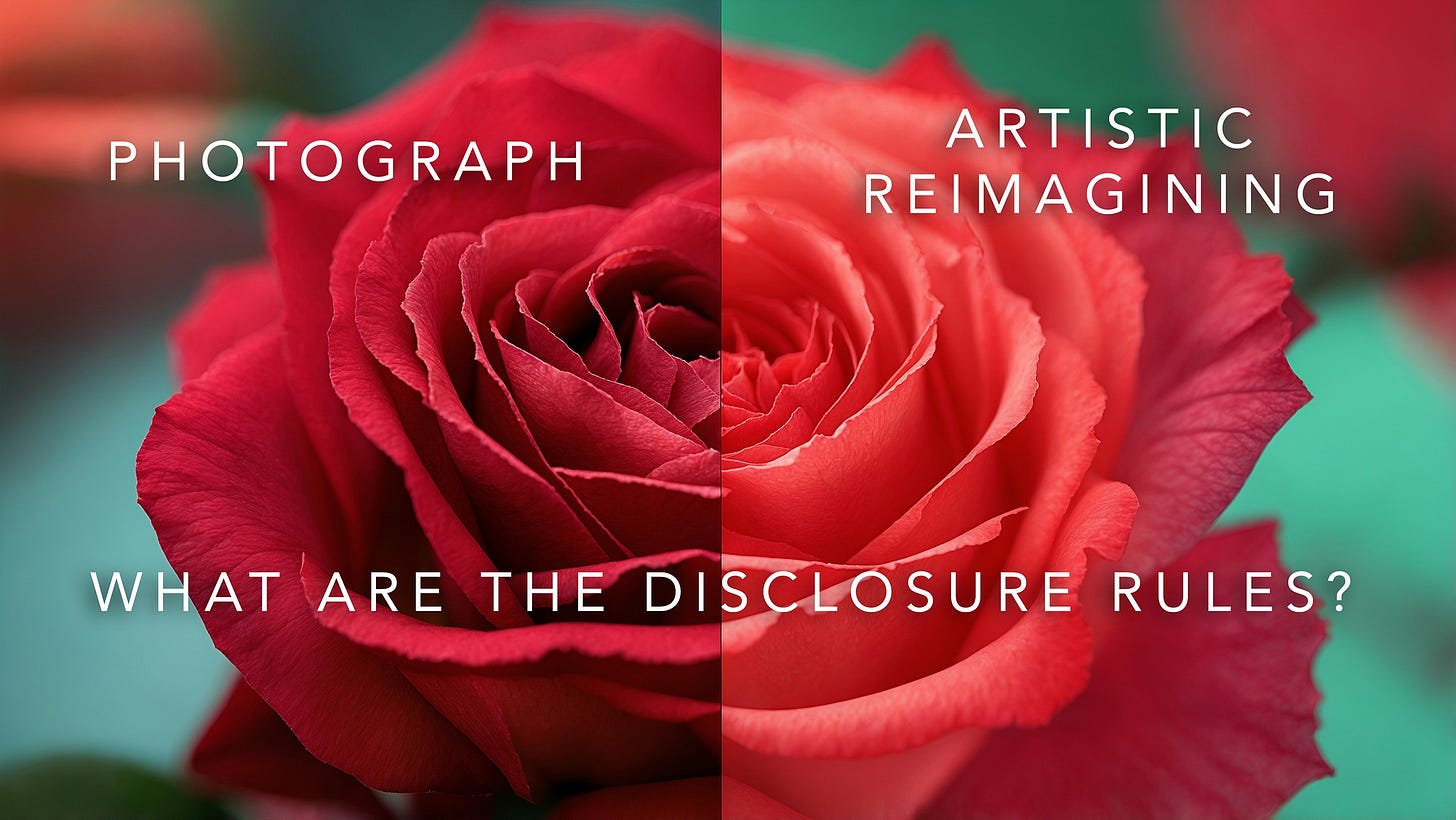How the New Content Origin Protection Act Could Impact AI-Enhanced Photography
A new bipartisan bill could establish official rules for labeling and presenting AI-enhanced media. Learn what the proposed law says, how it affects creative work, and why staying ahead matters.

Recently, the U.S. Senate introduced a new bill, S.1396, called the “Content Origin Protection and Integrity from Edited and Deepfaked Media Act of 2025.” This bipartisan bill is designed to help protect the public from being misled by manipulated media, especially content altered with AI.
You can read the S.1396 bill here.
After reviewing the bill carefully, we believe we can support it, at least in its current form. Here's what it means for photographers like us, and perhaps you, who use AI tools to enhance or reimagine original images.
What the Bill Says in Plain English
Most importantly, S.1396 doesn't ban AI editing or creativity. It simply asks that when media is "materially altered" — meaning, changed in a significant way — it should be disclosed. The idea is to ensure viewers know when an image, video, or audio isn't entirely authentic or could be misleading.
A Few examples of material alterations:
Adding, removing, significantly changing, or transforming major parts of a scene.
Making a person look like they said or did something they never did.
Replacing backgrounds, creating fictional landscapes, or inventing scenes.
Examples of what is NOT considered material alterations:
Routine color corrections.
Cropping, sharpening, or noise reduction.
Moderate AI-assisted cleanup, like removing dust spots, blemishes, or minor distractions.
How This Applies to AI-Based Photographic Art
At Aiello Studios, we often use AI tools like Photoshop, Topaz Photo AI, Leonardo AI, Midjourney, and others to transform our original photographs into new forms of digital art.
We already label these works as "digital art" or "photography-based digital art" when they go beyond conventional digital photo editing.
Under S.1396:
We would continue labeling these transformations.
There would be no need for a major change to our workflow.
Our use of Adobe's Content Credentials (which tags metadata about edits and AI use) would likely satisfy disclosure requirements.
In other words, if you are transparent about your process, you're doing exactly what this bill encourages.
Practical Steps for Photographers Using AI
If you edit or enhance your photos with AI, here are some simple ways to stay in line with the spirit of the bill:
Be Clear When Sharing: If you’ve materially altered an image, mention it in your caption, description, or metadata.
Use Tools Like Content Credentials: This can automatically attach information about your edits.
Label Your Art Thoughtfully: Terms like "digital art," "AI-enhanced," or "reimagined from original photography" provide clarity without needing to explain every technical step.
Think About Context: If the image is presented as "fine art," you have more flexibility. If it’s meant to appear photojournalistic, more precise disclosures would be appropriate.
Why We Support This Bill (for Now)
We believe that trust and transparency are key to helping AI-assisted photography and digital art thrive.
S.1396 doesn’t restrict creativity. It simply asks artists to be upfront when major changes have been made, especially when the final result might otherwise be mistaken for unedited reality.
However, it's important to note: this is a new bill. It could be amended during the Senate process. If and when it passes the Senate, it would still need to go to the House of Representatives, where it could again be amended.
For that reason, our support is based on the current version. We'll be keeping an eye on it as it moves forward.
By labeling our work clearly, we not only meet possible future legal expectations — we also help audiences appreciate the artistry involved.
Final Thought
Photographers have always adapted to new tools, from darkroom techniques to digital editing to AI-based transformations today.
S.1396 reminds us that how we present our work matters just as much as how we create it.
As always, we'll continue to share best practices, tools, and ethical standards to help fellow photographers create, innovate, and communicate clearly in this evolving space.
We're here to support your creative growth with practical, real-world insights.


Thanks for sharing